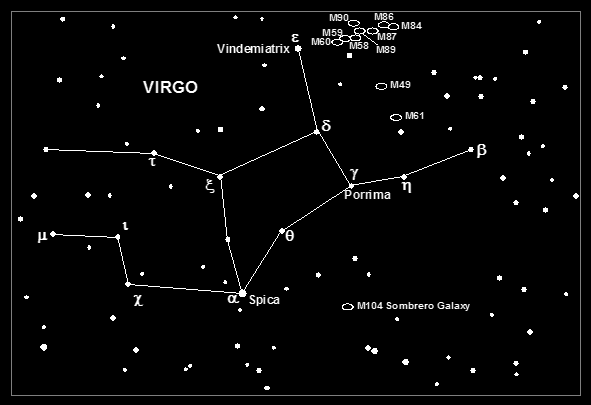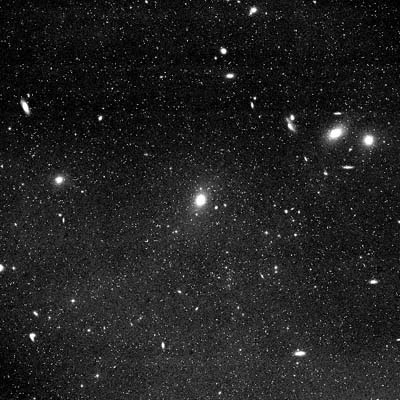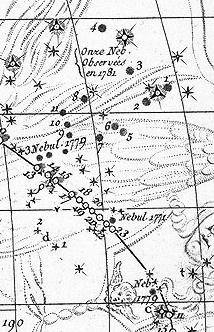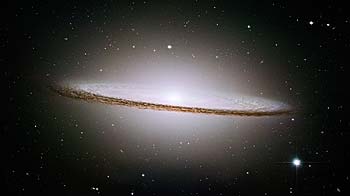Virgo
Virgo is famous for its huge cluster of galaxies, lying at a distance of about 40 million light years from us.
The Virgo Galaxy Cluster: The closest “supercluster” of galaxies to Earth, containing several thousand members, of which several dozen are visible in modest telescopes. The above diagram shows just the eleven catalogued by Charles Messier within Virgo itself .A number of the other prominent galaxies in the cluster lie north of the border of Virgo with Coma Berenices.The star chart image is of that drawn by Messier, cropped from a larger chart he published with his observations of the comet of 1779 (all 16 Messier objects are marked in this drawing).

The Virgo Cluster

Messier's star chart

M104, The Sombrero Galaxy
Furthest Backyard Object: What is the most distant object that can be seen through a typical amateur telescope (say 200mm – 250mm aperture)? The thirteenth magnitude quasar 3C 273 in Virgo has a fair claim at around two billion light years – 50 times further away than the Virgo cluster. Quasars were very mysterious objects when they were discovered in the 1960’s. It is now thought that their enormous luminosities are due to active super-massive black holes in their centres.